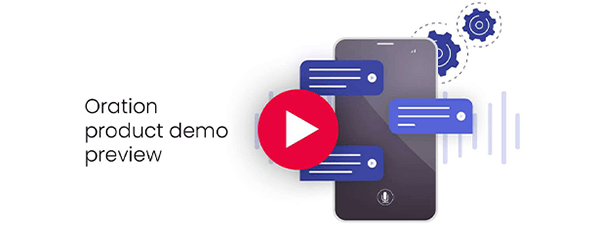What Computer Telephony Integration (CTI) means and how it can benefit your call centre
Digital technologies have been transforming the way we work for decades, enabling companies to ditch paperwork for digital documents and making operations more efficient through truly linked up processes. It makes sense, then, that digital technology has also become integral to improving the performance of call centres. Of course, this is not a new thing and predates the extensive cloud and digital technology stacks that we use today. Originally it was the simple humble computer on the call centre agent’s desk that was linked, hence it was known as CTI – Computer Telephony Integration.
What is CTI?
By the simplest definition, CTI is where a call centre’s telephony systems are linked to computer software and business applications to gain more control over the management of operations via digital devices. Using CTI, call centre agents can control all phone functions through their desktop creating a rich and connected experience including answering calls, transferring calls to other agents, and putting customers on hold.
But CTI is not about mimicking traditional phone functions by using computers for the sake of convenience – far from it. By integrating phones with the desktop, CTI creates the opportunity to maximise the productivity and efficiency of call centres with the latest technologies. Here’s an overview of some of the most common functions of CTI and how they are applied in the call centre environment.
Screen popping
Screen pop technology is one of the most established CTI technologies, designed to reduce average handling times (AHT) by giving agents a head start on incoming calls from customers. Essentially, this is where data from the telephony system (usually a customer’s telephone number) is automatically used to query a CRM database to retrieve information about the customer which is then sent to the agent’s screen – and this could include anything from call and transaction history to past issues and resolutions. Similarly, with the right IVR system, screen popping can also be used to deliver caller verbatim about their reason for making the call.
With screen-popping, agents can see the context and information they need to start resolving queries from the moment they pick up a call, without spending time asking questions and entering data themselves.
Automated customer authentication
CTI enables call centres to securely deliver a wider range of services to customers over the phone, and faster, by taking care of the authentication process. Whether it’s simply matching the mobile number a customer is calling from with customer records, requesting a pin code or password, or using voice biometrics, CTI will ensure callers are verified to self-serve, or enable agents to jump straight into the task at hand as soon as they pick up the phone. A critical part of a well-designed system also ensures that this CTI data is propagated forward – there is nothing worse than being transferred to another agent and having them ask for the ID information again.
Call routing (IVR)
The efficiency and effectiveness of your call routing can have a direct impact on customer experience and therefore, your customer satisfaction rating. With CTI, call centre managers can configure IVR software to make sure inbound calls are delivered to the best outcome, either by matching specific call types to their agent’s expertise and experience or by prompting targeted banners or self-service options to improve your IVR containment rate.
Importantly, the shift to cloud-based CTI solutions means call centres can quickly benefit from the most sophisticated call routing technologies without investing huge amounts of capital. IVR systems that use AI-powered speech recognition can determine any number of caller intents from natural language to maximise the chances of routing to the right outcome every time. Meanwhile, intuitive cloud-based call routing software also gives call centre managers more flexibility and control over day-to-day management, such as monitoring incoming call types and adding and adjusting unlimited targeted banners and self-serve options without requiring the help of IT.
Self-service (IVR)
With technology having come a long way since screen popping was first introduced to call centres to reduce AHT, CTIs now enable many call centres to contain more calls entirely within the IVR. In other words, this means more calls can be successfully resolved without the need for an agent at all, which can save a significant amount in operating costs. Importantly, AI-enhanced IVR systems that allow for more conversational automated interactions with customers are opening the door to an increasing number of ways customers can effortlessly serve themselves without agent involvement.
By integrating the right software with your telephony, types of self-service options could include making bookings, paying account balances, and requesting information or links that can be sent via SMS or email – all of which is made possible by the seamless integration of your telephony and multiple applications working together.
Software integrations, reporting and analytics
CTI can also help to save agents ‘after call work’ which not only drives up costs but also impacts the customer experience by prolonging call waiting times. A typical task in the after call work is for the agent to perform a call classification – often called the ‘call outcome’. This effort and time can be removed by automatically attaching information about the nature of a call captured from caller verbatim and call records such as transcripts, recordings, survey responses, and other call metrics.
Call centres can also maximise the value of call data by integrating with advanced analytics and reporting capabilities; in this case call centre managers are empowered to improve processes through insights around the types of calls received and when, resolution times (AHT), containment rates, call abandonment, and customer satisfaction levels across different segments.
Importantly, software integrations enhance the customer experience on the phone. Agents are enabled to offer more personalised experiences when they can access multiple data sources like customer transactions, personal information, and account status from one interface.
CTI technology has become fundamental in an environment where companies are competing more fiercely than ever to deliver the best customer experiences. With the capability to help customer service teams work more efficiently while delivering resolutions faster and more conveniently, it’s important to think about how your telephone and business applications can be best integrated to meet the changing expectations of your customers.
Your customer experience (CX) platform brings together the agent telephony, CRM, and all the digital tools you need to interact with callers either via phone or chat, including workforce management tools and quality assurance tools to optimise agent performance and the customer journey.
In contrast to traditional menu structures used in contact centres, Oration’s call routing technology asks callers a simple open question and understands the reason for the call through their natural language responses. While Oration combines the power of industry-leading advanced speech recognition with sophisticated voice biometrics technology to securely serve customers in more ways than ever before, contact centre administrators can also ensure the caller experience stays in sync with changing business needs through ongoing supervised learning techniques.







